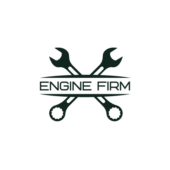Health and Safety in Automotive Industry
The automotive industry is a dynamic and fast-paced environment where health and safety considerations are paramount. From manufacturing plants to service centers, ensuring the well-being of workers is crucial for operational success. In this article, we delve into the key aspects of health and safety practices in the automotive sector. Workplaces in the automotive industry are confronted with various health and safety challenges that need diligent attention to safeguard employees and enhance operational efficiency. Here are some crucial aspects to consider:
When operating in automotive manufacturing plants or service centers, employees are exposed to a plethora of workplace hazards. These hazards may include chemical exposure from paint and solvents used in the painting process, the risk of burns from welding activities, the potential for hearing damage due to loud machinery, and the danger of ergonomic injuries from repetitive tasks or improper lifting techniques. It’s imperative for employers to identify and mitigate these hazards through robust safety protocols, employee training, and the provision of suitable protective equipment.
Ergonomic concerns play a significant role in the automotive industry, where workers often engage in repetitive motions and heavy lifting tasks. Prolonged exposure to such activities can lead to musculoskeletal disorders, back injuries, and other physical strains. Employers must design workstations that promote proper posture, provide ergonomic tools and equipment, and offer regular breaks to prevent overexertion. By addressing ergonomic concerns, companies can reduce the risk of workplace injuries and create a more comfortable and sustainable work environment for their employees.
Regulatory Standards and Compliance
In the automotive industry, adhering to regulatory standards and ensuring compliance is crucial to maintaining a safe work environment. This section will outline the key guidelines that companies need to follow to meet safety requirements.
Companies in the automotive sector must comply with the Occupational Safety and Health Administration (OSHA) guidelines to guarantee a safe workplace for their employees. These guidelines cover a wide range of safety protocols, including hazard communication, machine guarding, and respiratory protection. By implementing OSHA’s regulations, automotive companies can mitigate workplace risks and prevent accidents.
Apart from local regulations, automotive businesses need to adhere to global safety standards to ensure consistency in safety practices across different regions. International organizations like the International Organization for Standardization (ISO) set benchmarks for occupational health and safety management systems. Aligning with these global standards not only fosters a safer work environment but also enhances the industry’s reputation for prioritizing employee well-being.
Innovative Solutions for Enhancing Safety
Innovations play a crucial role in enhancing safety measures within the automotive industry. Here are some cutting-edge solutions that are revolutionizing safety practices in this sector:
Automation and robotics are dominating the automotive industry, offering enhanced safety protocols for workers. Advanced robotic systems are being implemented in manufacturing plants to handle hazardous tasks, reducing the risk of injuries. These technologies ensure precision and efficiency in production processes, safeguarding employees from potentially dangerous work environments.
Wearable safety technology is gaining popularity as a proactive approach to ensuring worker well-being. Devices such as smart helmets, vests with sensors, and smart glasses provide real-time safety alerts, monitor vital signs, and offer ergonomic feedback to prevent injuries. These innovative wearables not only enhance safety but also streamline communication in the workplace, enabling swift responses to emergencies and potential hazards.
Health and Safety in Automotive Industry is paramount for ensuring a secure work environment and protecting workers from potential hazards. By implementing safety protocols, providing proper training, and utilizing innovative technologies, employers can enhance efficiency and reduce risks associated with chemical exposure and ergonomic issues. Following regulatory standards like OSHA guidelines and global safety protocols is essential to maintaining a safe workplace. Case studies from leading manufacturers demonstrate the positive impact of comprehensive safety programs and ergonomic initiatives on reducing workplace accidents and musculoskeletal disorders. Investing in tailored training programs and regular safety audits are key strategies to promote employee awareness and adherence to safety measures. Overall, prioritizing health and safety not only safeguards workers but also fosters a culture of well-being and continuous improvement in the automotive industry.

